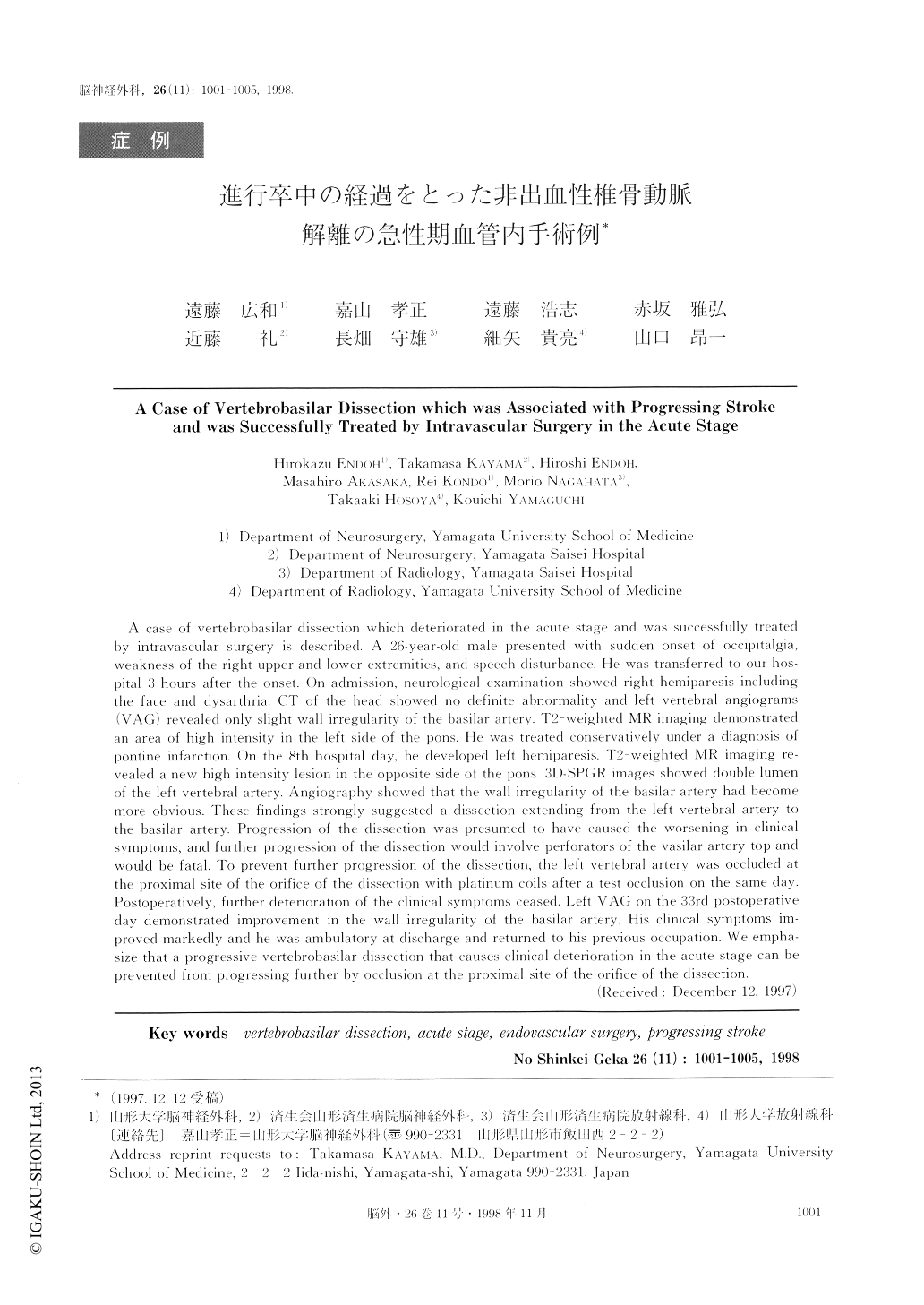Japanese
English
- 有料閲覧
- Abstract 文献概要
- 1ページ目 Look Inside
I.はじめに
椎骨脳底動脈解離は,最近本邦を中心に注目を集めている疾患の一つでその注目度と相俟って報告例も増加している1,3,11,14).しかしながら本疾患のうち,脳虚血症状,頭痛などにて発症する非出血例の治療法に関しては未だ一定の見解がない.今回,われわれは脳幹梗塞にて発症し解離が進行したために症状が増悪した椎骨脳底動脈解離に対して,急性期に血管内手術にてproximal oc-clusionを施行し良好な結果を得ることができた1例を経験したので報告するとともに,椎骨脳底動脈解離の非出血例に対する治療法を考察する.
A case of vertebrobasilar dissection which deteriorated in the acute stage and was successfully treated by intravascular surgery is described. A 26-year-old male presented with sudden onset of occipitalgia, weakness of the right upper and lower extremities, and speech disturbapce. He was transferred to our hos-pital 3 hours after the onset. On admission, neurological examination showed right hemipares is including the face and dysarthria. CT of the head showed no definite ahnormality and left vertebral angiograms (VAG) revealed only slight wall irregularity of the basilar artery. T2-weighted MR imaging demonstrated an area of high intensity in the left side of the pons. He was treated conservatively under a diagnosis of pontine infarction. On the 8th hospital day, he developed left hemiparesis. T2-weighted MR imaging re-vealed a new high intensity lesion in the opposite side of the pons. 3D-SPGR images showed double lumen of the left vertebral artery. Angiography showed thauhe wall irregularity of the basilar artery had become more obvious, These findings strongly suggested a dissection extending from the left vertebral artery to the basilar artery. Progression of the dissection was presumed to have caused the worsening in clinical symptoms, and further progression of the dissection would involve perforators of the vasilar artery top and would be fatal. To prevent further progression of the dissection, the left vertebral artery was occluded at the proximal site of the orifice of the dissection with platinum coils after a test occlusion on the same day. Postoperatively, further deterioration of the clinical symptoms ceased. Left VAG on the 33rd postoperative day demonstrated improvement in the wall irregularity of the basilar artery. His chnical symptoms im-proved markedly and he was ambulatory at discharge and returned to his previous occupation. We empha-size that a progressive vertebrobasilar dissection that causes clinical deterioration in the acute stage can be prevented from progressing further by occlusion at the proximal site of the orifice of the dissection.

Copyright © 1998, Igaku-Shoin Ltd. All rights reserved.


